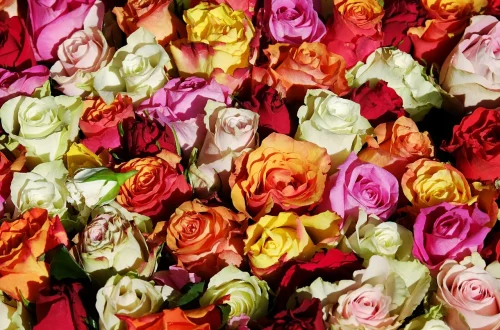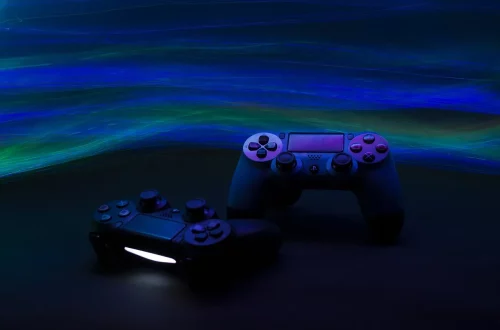
The Ultimate Guide to Black Hair Dye for Men: Tips and Techniques
Black hair dye has become an increasingly popular choice among men who wish to enhance their appearance, embrace a new style, or cover up greys. The versatility of black hair dye allows for a wide range of looks, from subtle shades to dramatic transformations. This trend has seen a rise not only in the number of men dyeing their hair but also in the variety of products available on the market.
Choosing the right dye can be a daunting task, given the myriad of options, formulations, and techniques available. Factors such as hair type, skin tone, and personal style play a significant role in determining the best approach to dying hair black. Additionally, understanding the application process, maintenance, and potential challenges can help men achieve a polished look without the fear of damage or disappointment.
As more men embrace hair color as a form of self-expression, the discourse around hair dye has evolved. No longer considered a feminine pursuit, dyeing hair black has become a common practice among men of all ages. Whether you’re looking to make a bold statement or simply wish to maintain a youthful appearance, this guide offers valuable insights into the world of black hair dye for men, ensuring that your journey into hair color is as smooth and rewarding as possible.
Choosing the Right Black Hair Dye
When it comes to selecting the perfect black hair dye, it’s important to consider several critical factors. The first step is to determine the type of dye that best suits your needs. There are generally three options available: permanent, semi-permanent, and temporary dyes.
Permanent dyes penetrate the hair shaft and provide long-lasting results, making them ideal for those looking for a more permanent solution to covering greys or changing their hair color. On the other hand, semi-permanent dyes offer a less drastic change and typically last for about 4 to 12 washes. They are perfect for those who want to experiment with black hair without committing to a long-term change. Finally, temporary dyes are the least durable, lasting only until the next wash. They are great for special occasions or when you want to test the waters with a new look.
Next, consider the shade of black that complements your skin tone. There are various shades of black, ranging from jet black to soft black. Jet black tends to be more striking and may suit individuals with cooler skin tones, while soft black has warmer undertones and can be more flattering for those with warmer skin tones. Testing a small strand of hair with the dye can help determine how the color will look against your skin.
Additionally, pay attention to the ingredients in the hair dye. Some products contain harsh chemicals that can damage hair, while others offer nourishing ingredients that promote hair health. Look for dyes that are ammonia-free or contain natural ingredients to minimize damage and maintain healthy, vibrant hair.
Lastly, consider your hair type and texture. Different dyes may work better for straight, wavy, or curly hair. Curly hair, for instance, may require a different approach to ensure even application and distribution of color. Understanding your hair’s unique characteristics will help you select a product that delivers the best results.
Preparing for the Dyeing Process
Preparation is key to achieving the best results when dyeing your hair black. Before diving into the dyeing process, take some time to prepare your hair and the surrounding area to ensure a smooth experience.
Start by assessing the current condition of your hair. If your hair is damaged or overly dry, consider treating it with a deep conditioning treatment a week prior to dyeing. Healthy hair absorbs dye more effectively, resulting in a richer, more vibrant color. Additionally, avoid washing your hair right before dyeing; natural oils can help protect your scalp and hair during the process.
Next, gather all necessary supplies. This includes the black hair dye, a mixing bowl, an applicator brush, gloves, and a cape or old towel to protect your clothes. It’s also a good idea to have a comb and clips handy to section your hair for easier application.
Before applying the dye, conduct a patch test to check for any allergic reactions. This is especially important if you are using a dye for the first time. Follow the instructions on the packaging for the patch test, and wait the recommended time before checking for any adverse reactions.
Once you’re ready to begin, section your hair into manageable parts. This ensures even coverage and helps prevent missed spots. Start applying the dye at the roots, as this area usually requires more time for the color to develop. Work your way down to the ends, using the applicator brush to ensure that every strand is saturated with dye.
After application, set a timer according to the instructions on the dye packaging. Avoid exceeding the recommended time, as this can lead to unwanted results. Once the time is up, rinse your hair thoroughly with lukewarm water until the water runs clear. Follow up with a conditioner to nourish your hair and lock in the color.
Maintaining Black Hair Dye: Tips for Longevity
After achieving that stunning black hue, it’s essential to take steps to maintain the color and keep your hair looking healthy. Proper aftercare can significantly extend the life of your black hair dye and prevent fading, ensuring that you look your best for longer.
One of the first things to consider is the type of shampoo and conditioner you use. Opt for sulfate-free products designed for color-treated hair. Sulfates can strip color from your hair, leading to faster fading. Additionally, look for products that contain moisturizing ingredients to keep your hair hydrated and healthy.
Another crucial aspect of maintenance is minimizing heat exposure. Excessive heat from styling tools like blow dryers, flat irons, and curling wands can damage hair and cause color to fade more quickly. Whenever possible, let your hair air dry and embrace natural styling methods. If you must use heat, apply a heat protectant spray to shield your hair from damage.
Regular touch-ups may also be necessary, especially if you have noticeable regrowth. Depending on the type of dye used and your hair growth rate, you may need to refresh your color every four to six weeks. This will help maintain a consistent and polished look.
In addition to product choices and heat management, consider how often you wash your hair. Washing your hair too frequently can strip away natural oils and lead to quicker fading. Aim to wash your hair two to three times a week, and consider using dry shampoo in between washes to keep your hair looking fresh and clean.
Lastly, protect your hair from environmental factors that can cause fading. Chlorine from swimming pools and UV rays from the sun can both impact the vibrancy of your black hair. Wearing a swim cap while swimming and using hair products with UV protection can help shield your hair from these damaging elements.
By following these maintenance tips, you can enjoy your bold black hair color for an extended period while keeping your locks healthy and vibrant.
Addressing Common Concerns with Black Hair Dye
While dyeing your hair black can be a transformative and exciting experience, it’s not without its challenges. Many individuals may have concerns or face issues during and after the dyeing process. Understanding these common problems can help you navigate them more effectively.
One frequent concern is the potential for hair damage. The chemicals in hair dye can weaken hair strands if not used correctly. To mitigate this, always follow the instructions provided with the dye and avoid over-processing your hair. If you have previously dyed hair, consider consulting a professional stylist for advice on the best approach to avoid damage.
Another common issue is uneven color application. To prevent this, take your time during the application process and ensure that every section of hair is thoroughly coated with dye. Using a comb to distribute the color evenly can also help. If you find that some areas appear darker or lighter than others after dyeing, you may need to do a quick touch-up in the uneven spots.
Fading is another concern that many men face after dyeing their hair black. The color may start to lose its vibrancy after a few washes. To combat this, incorporate color-safe shampoos and conditioners into your hair care routine, and limit the use of heat styling tools. Additionally, consider using a color-depositing conditioner to refresh your black color between dye jobs.
Some individuals may also experience scalp irritation or allergic reactions to hair dye. This is why conducting a patch test before applying the dye to your entire head is essential. If you notice any redness, itching, or discomfort, discontinue use and consult with a healthcare professional if necessary.
Lastly, consider the impact of lifestyle factors on your hair color. Activities such as swimming, excessive sun exposure, or living in a dry climate can all contribute to faster fading. Taking preventive measures, such as wearing a hat in the sun and using protective hair products, can help preserve your color and keep your hair looking its best.
In conclusion, while dyeing your hair black can come with challenges, being informed and prepared will help you enjoy the process and achieve stunning results.
—
**Disclaimer:** This article is for informational purposes only and does not constitute medical advice. If you have any health concerns or conditions, please consult a healthcare professional.




